Feature
Les Caractères de l’Amour
Satoko Doi-Luck, Hannah Ely & Olwen Foulkes on reconstructing Duval’s operatic intrigue
Share this
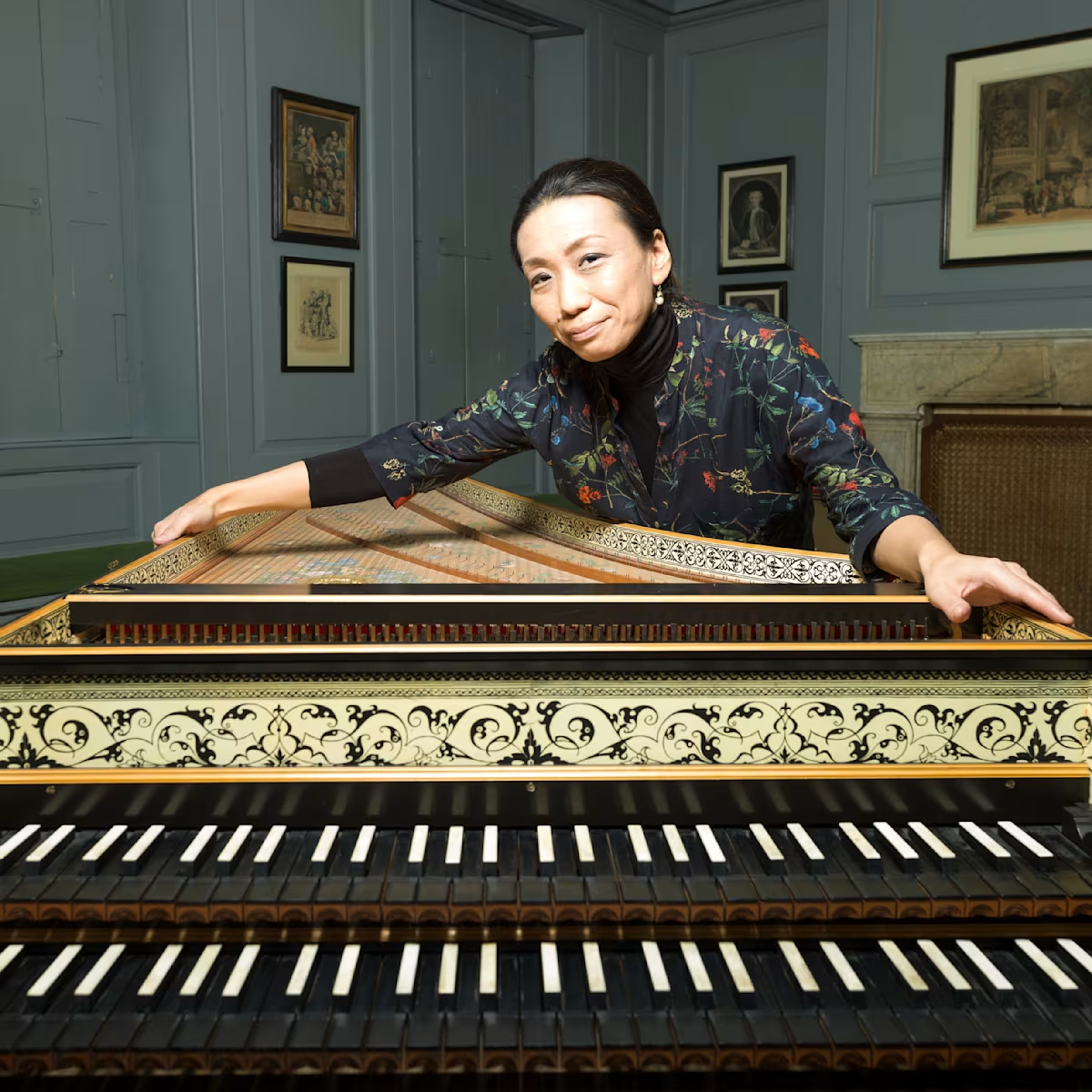
FIRST PUBLISHED 5 OCT 2025
Les Caractères de l’amour was first performed on 18 October 1736 at the Paris Opera. It was composed by the young Mademoiselle Duval who, as an accomplished harpsichordist, took a central role in the performance by playing the harpsichord throughout, in all nine of the performances, much to the astonishment and delight of the Parisian public. Duval remains quite a mysterious figure (history hasn’t even recorded her first name), but we believe she received her musical training in the chorus at the Paris Opera. Duval was the daughter of a ballerina, and it is possible that she also performed as a dancer before composing Les Caractères de l’amour.
On 10 October 2025, Brighton Early Music Festival (BREMF) will present an abridged concert version of this work, with Satoko Doi-Luck playing a central role from the harpsichord, much like Duval herself. The Festival commissioned Satoko to reconstruct and orchestrate Duval’s short score for this performance. We asked Satoko, joined by Hannah Ely and Olwen Foulkes, Co-Artistic Directors of BREMF, some questions about this process.
What first drew you to Mademoiselle Duval and her opera-ballet, Les Génies ou les Caractères de l’amour?
Hannah & Olwen: We first got to know Les Caractères through a single aria while programming for a chamber music concert. We were drawn in by the fluidity of the melodic writing and the way that the vocal and instrumental lines weave in and out of each other. The whole opera looked so vibrant, and so we wanted to hear the rest of it!
Satoko: As Ensemble Molière, we focus on French baroque and we were always aware of this opera, and that the material that’s survived was only a reduced short score. While we were the BBC New Generation Baroque Ensemble, BBC Radio 3 asked us to make a programme of all-female composers for a celebration of International Women’s Day (IWD), and that was when we re-approached the possibility of performing this piece. I arranged/re-orchestrated nine movements from this opera to make a suite. The programme including this suite was broadcast on IWD in 2023 and we received lovely comments. Since then we wanted to perform more of her music. I personally also had a long-term dream to work on a reconstruction of this opera.
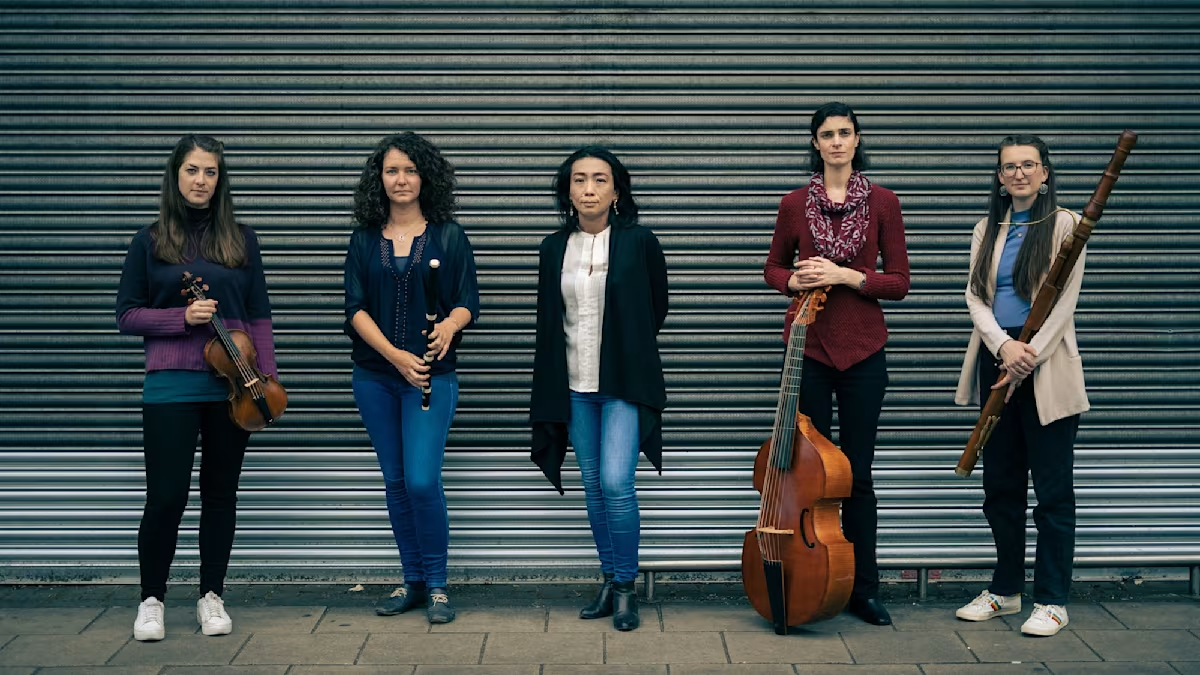
What do we know about the opera’s story and the allegorical ‘characters of love’ it portrays?
Hannah & Olwen: The libretto for Duval’s opera was written by Jacques Fleury. It is structured in four acts, each exploring a different facet of love: Act One is ‘indiscreet love’, Act Two ‘ambitious love’, Act Three ‘violent love’, and Act Four ‘light love’. The opera has two titles; Les Génies or Les Caractères de l’amour, the former connecting the various expressions of love to the four ‘genies’ or elements: water (Les Nymphes), earth (Les Gnomes), fire (Les Salamandes), and air (Les Silphes).
The work shares many similarities with Rameau’s popular opera, Les Indes galantes, a suite from which opens our concert, and even quotes a phrase from Rameau’s Pygmalion. In both operas, each act tells a self-contained story with distinct characters; the acts are linked only thematically, through the overarching idea of love.
In the prologue, Zoroastre assigns the four genies the task of performing good works on earth, but Love intervenes, claiming this responsibility for herself. What follows is a playful pursuit of pleasure and amusement.
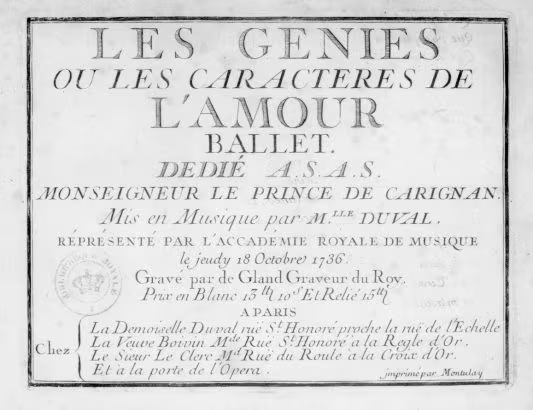
What sources survive of Duval’s opera, and what gaps did you have to fill in?
Hannah & Olwen: Like many French operas of the time, Les Génies was published in a reduced score which only provides the melody for each aria, the recitatives, and some orchestral lines. As none of the original performing parts have survived, the whole work needed to be orchestrated before it could be performed today.
This reconstruction was entrusted to Satoko who, like Duval herself, will perform this premiere from the harpsichord. We’re very much looking forward to hearing Duval and Satoko’s full score come to life! Our performance will be a specially abridged version of the work, giving a taste of the scope of Duval's creativity and skill.
What was your approach to reconstructing the missing music? What kinds of decisions did you need to make creatively or stylistically?
Satoko: As I perform this period and style of music all the time, that prepared me well to come up with some phrases for the inner parts within the harmonic language quite naturally.
The parts which survived were the upper and lower parts, recitatives and arias, and for the choir, the soprano and occasional baritone lines. That leaves a lot to complete in order to perform it as a full orchestra and full choir, but enough clues are provided – melodies and figures (numbers written underneath bass part) that specify all the harmonies. I would say the figures were the most helpful clues to compose the inner parts.
Thanks to the engraver of the original short score, we are left with Duval’s own figures. It was almost like having a conversation with her while writing the inner lines: ‘Would you have written like this? Ah you wanted this harmony and this dissonance on this beat, okay! I’ll give this note to this part’, etc.
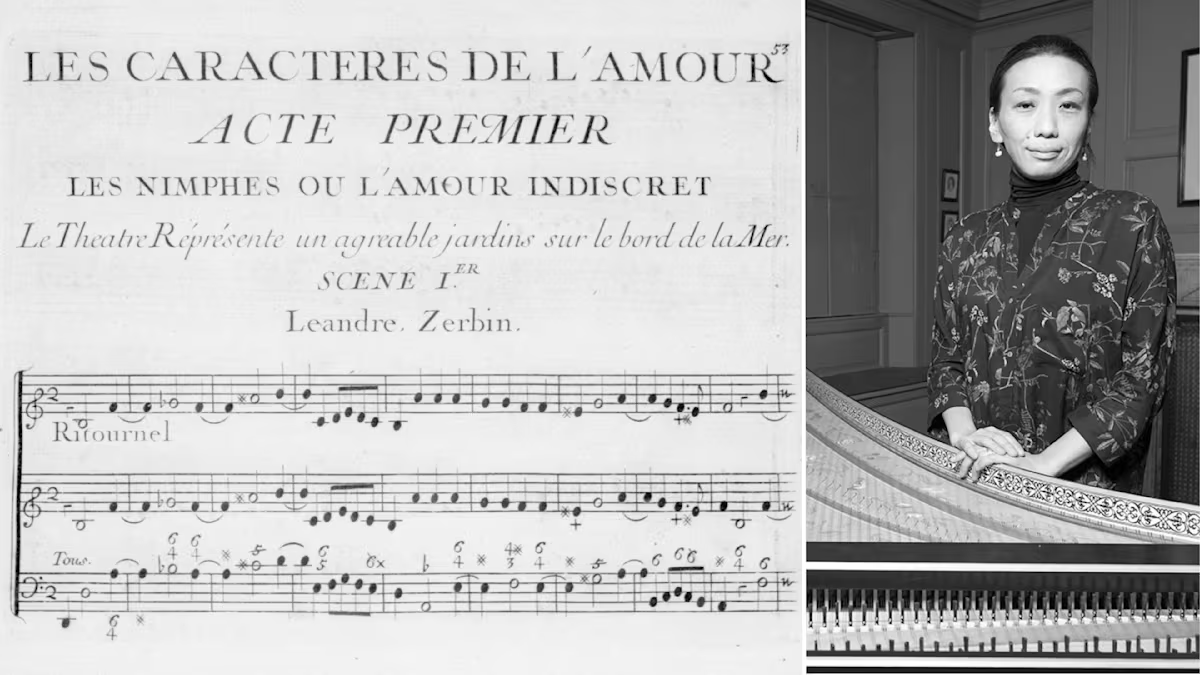
How do you navigate staying faithful to Duval’s musical voice while also creating new material to make the work performable? Did it require liaising with the performers during the reconstruction?
Satoko: I tried to be faithful to Duval’s musical voice through following her harmony, rhythmic patterns, and word setting in the chorus parts. Some decisions had to be made, for example, about the choir’s counterpoint entries, and I had to take some liberties with an aria for which only a single violin part had survived. Should I keep it as it is or imagine that there was a section of strings also playing to harmonise with? It could have been either, as looking at similar works from the period or at those of her predecessors, there are arias with both options. It was fun to explore the possibilities and make decisions, too.
Duval was only in her late teens or early 20s when Les Caractères was performed at the Paris Opera. What might it tell us about her talent and the cultural climate of the time?
Hannah & Olwen: That Duval was entrusted with such a project at her young age shows both the extraordinary level of her talent and ambition, and also the particular cultural climate of mid-18th-century Paris. She was only the second woman to have an opera performed at the Paris Opera, the first, Élisabeth Jacquet de la Guerre, had done so more than 40 years earlier.
The fact that it took four decades for another woman to be given this opportunity underlines just how exceptional Duval’s achievement was. The Paris Opera was not an easy place for new voices to be heard, let alone female ones, so her success indicates a striking combination of skill, originality, and determination. At the same time, the librettist’s preface to the opera is somewhat patronising, as if he were personally responsible for bringing this young woman’s talent to public attention, an attitude that reminds us of how unusual her success must have seemed:
Fleury: ‘In order to fulfil public interest, I’m introducing a new Muse who has set this opera to music. No matter how admirable this is, and in an attempt to please, the fair sex will at least be grateful to me for introducing this new Muse who possesses a unique talent, enhancing the gifts of her sex, and who, because of her expertise, deserves the support and indulgence of the public.’
What excites you most about bringing rather neglected composers like Duval back into the repertoire? Do you think there might be more to uncover about her and her music?
Satoko: It’s already an outstanding achievement for a such young composer to have nine performances at the Paris Opera. It was revived as a concert performance a few years later but not staged again. Now that I have been fortunate enough to have this opportunity to reconstruct the opera thanks to BREMF, and having put on a concert performance of some excerpts, my dream going forward is to one day complete the work and put on a staged production somewhere in the UK!
Mlle Duval, arr. by Satoko Doi-Luck | Ouverture, Les Génies ou Les Caractères de l'amour | Ensemble Molière
How has working on this project shaped your own perspective as a performer and orchestrator?
Satoko: For a long time, I have been a big fan of inner parts in French baroque music (although that sounds very geeky!), but they are so beautifully written. I’m sure viola players can relate! Now that I’ve written my own, following the specific ethos and style, I appreciate other works even more as a performer, and I would love to do more of these reconstructions.
Who are the cast members for this production?
Hannah & Olwen: We’re lucky to have a dedicated and enthusiastic cast of young singers for this project, who were selected as part of the BREMF Emerging Artists scheme. Sopranos Harriet Cameron and Laura Coppinger, tenor Richard Jackson, baritone Allyn Wu and bass Henry Saywell have already taken part in a masterclass on French baroque style with Sophie Daneman, and will have further coaching and rehearsals with Satoko ahead of the performance to really immerse themselves in the new edition and the French baroque sound-world.

What do you hope the audience will take away from hearing Les Caractères for the first time in the UK?
Hannah & Olwen: We hope that our abridged performance, given almost exactly 289 years after Duval’s French premiere, gives this fantastic opera the attention it deserves, and that it will have its fully staged UK premiere before too long. Above all, we’d like the audience to come away struck by the beauty, vitality, and dramatic flair of Les Caractères de l’amour, music that has been unjustly overlooked for centuries. We hope listeners will feel a sense of discovery, as if uncovering a hidden gem of the French Baroque stage that still speaks vividly to us today.
Satoko: I hope the audience members can immerse themselves in the beautiful and dramatic writing of Mademoiselle Duval and enjoy these excerpts. I hope they will develop a thirst for hearing the whole opera in future!
Hear Satoko Doi-Luck's reconstruction of 'Les Caractères de l'amour' live in a new concert version at the Brighton Early Music Festival on 10 October 2025, performed by Ensemble Molière, the BREMF Players directed by Alison Bury, the Baroque Collective Singers under conductor John Hancorn, and the cast – Harriet Cameron (soprano), Laura Coppinger (soprano), Richard Jackson (tenor), Allyn Wu (baritone) and Henry Saywell (bass).
Share this
Keep reading
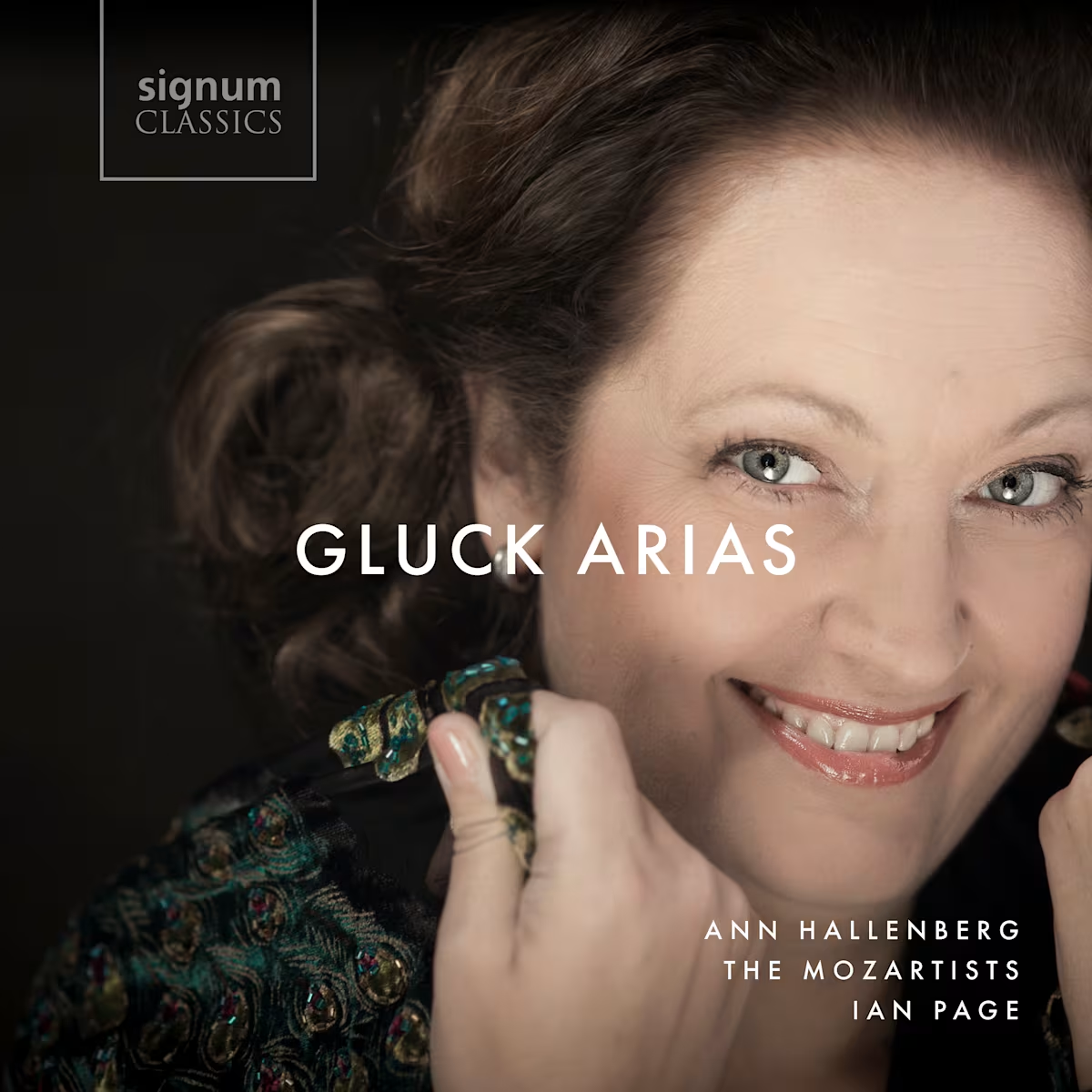
Gluck Arias – Ann Hallenberg with The Mozartists/Ian Page
Ian Page and The Mozartists’ latest recording for Signum Classics features a programme of Gluck arias sung by celebrated Swedish mezzo-soprano Ann Hallenberg.
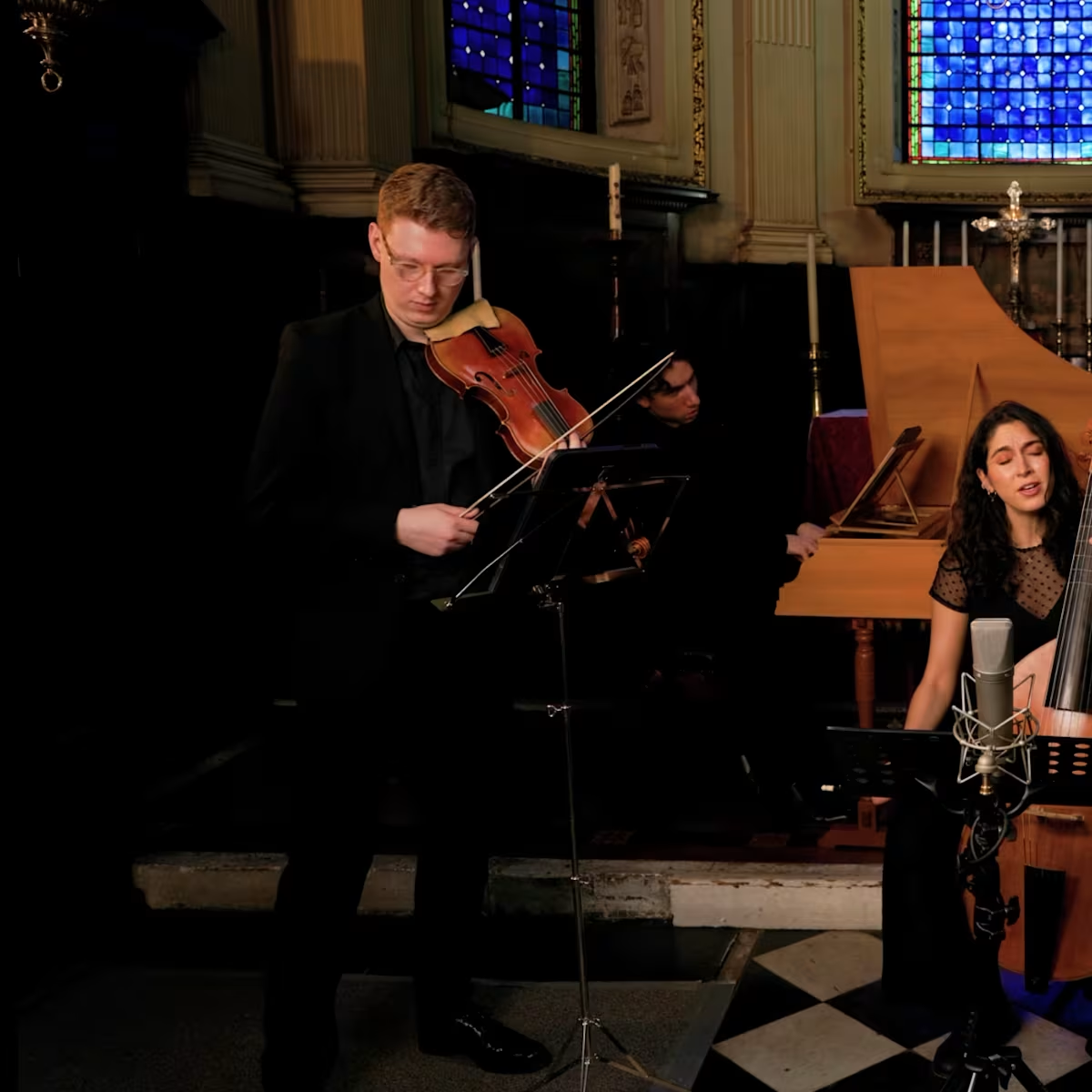
Bellot Ensemble performs Strozzi’s 'Che si può fare'
Bellot Ensemble performs Barbara Strozzi’s Che si può fare, with soprano Lucine Musaelian, at St Mary Le Strand, London.
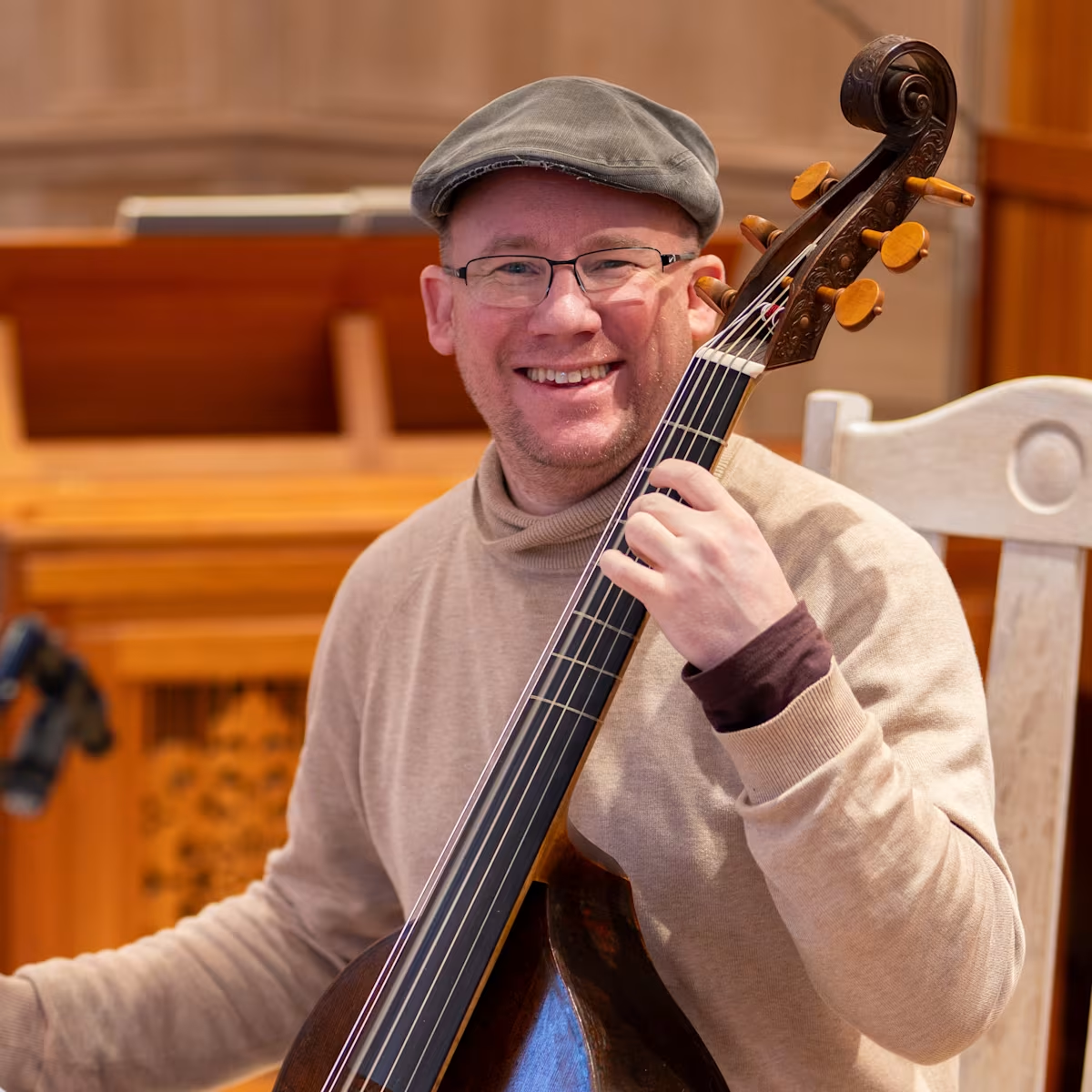
In conversation: Henrik Persson
Continuo Connect meets baroque cellist and viol player Henrik Persson, co-founder of the ensemble Newe Vialles.





